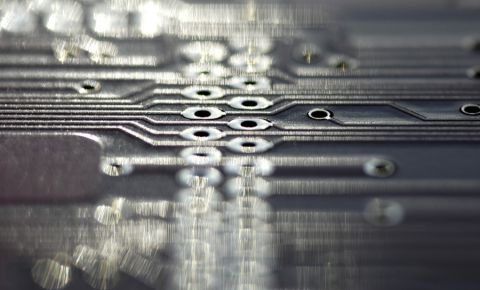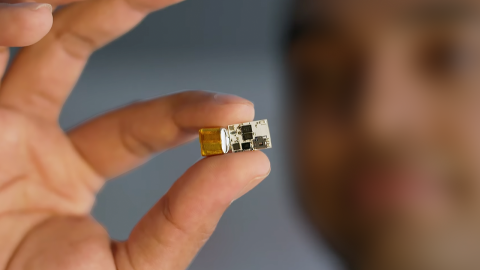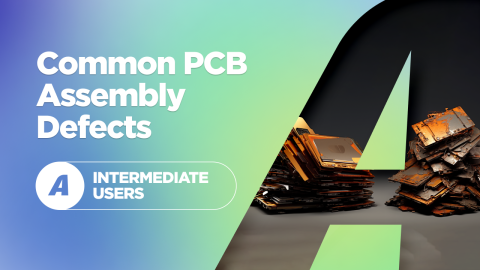When Should You Use Intrusive Soldering?

It’s a sad fact of PCB design: through-hole components don’t get a lot of love. They tend to be older technology, or they could be mechanical parts that need to have a very stable attachment to the PCB. Through-hole parts are also often found in power electronics when working with AC power coming out of a wall outlet.
Still, these components might need to live on a PCB alongside standard SMD parts. If everything on your board is through-hole, then assembly is easy, just put it all through wave soldering and you’re finished! But if you have SMD parts on the same board, can you get away with running the board through wave soldering?
As it turns out, there is another option known as intrusive soldering, or pin-in-paste soldering. The idea is to extend a surface-mount process to a through-hole component so that you can reduce assembly process steps and complexity.
How Intrusive Soldering Works
The idea behind intrusive soldering, also known as pin-in-paste soldering is simple: solder paste is printed onto or around a through-hole pad, and the through-hole component is passed into reflow with your SMD components. The molten solder paste then fills in the through-hole and attaches the component pin.
Normally, you would use wave soldering to assemble boards that only have through-hole components. However, because most components are now SMD, reflow has become the primary process used in assembly. So what’s the alternative when you have mixed components? You might find one of the following:
-
All parts are reflowed, where intrusive soldering is used for through-holes
-
SMD parts are reflowed, but hand soldering or selective soldering used for large through-holes
In the intrusive soldering process, manual paste application can be performed with a stencil and squeegee, or an automated paste dispenser can be used to apply the solder paste.
Because intrusive soldering is essentially just reflow for through-holes, they require a mix of through-hole and SMD design rules. If you were using a component specifically for intrusive soldering, a paste mask opening would be needed in the footprint. Although solder paste would need to be applied for intrusive soldering, there are some reasons to not apply this in all of your components.
Does This Mean Through-Holes Need Paste Mask Openings?
The simple answer is “no” you would not need to manually apply paste mask openings on all of your through-hole footprints. You can apply these if you want to, but there is not a requirement to do this just to enable through–hole reflow. If your assembler determines intrusive soldering is the best process, they can add the right paste mask opening to your Gerbers.
If you do add your own paste mask openings, then be careful. These should not be too large, otherwise you might get excessive intrusion through the back side of the board. This is a problem in high density boards where other parts might be near the paste mask. If things are really dense, then two nearby mask openings can overlap, and you create a risk of a short circuit due to excessive solder.
The image below shows one example with a connector that uses pin-in-paste soldering. This image shows a connector footprint that includes a large amount of solder on the bottom side of a connector in order to attach a large welding tab. This tab is built into the body of the component.

The top image shows a group of components in 3D. The bottom image shows the same components with their paste mask openings visible. The through-hole pins on the edge of the connectors have big paste mask openings that intersect with the SMD resistors and can create a short
If you want your assembler to use intrusive soldering or pin-in-paste soldering on your PCB, then you can request it in an assembly drawing as a preferred process. They might come back with a few words as to whether this is the best process, but you can certainly request it.
If you need to design PCB footprints and a PCB layout for intrusive soldering, you can get the job done with the best PCB design tools Altium Designer®. To implement collaboration in today’s cross-disciplinary environment, innovative companies are using the Altium 365™ platform to easily share design data and put projects into manufacturing.
We have only scratched the surface of what’s possible with Altium Designer on Altium 365. Start your free trial of Altium Designer + Altium 365 today.










